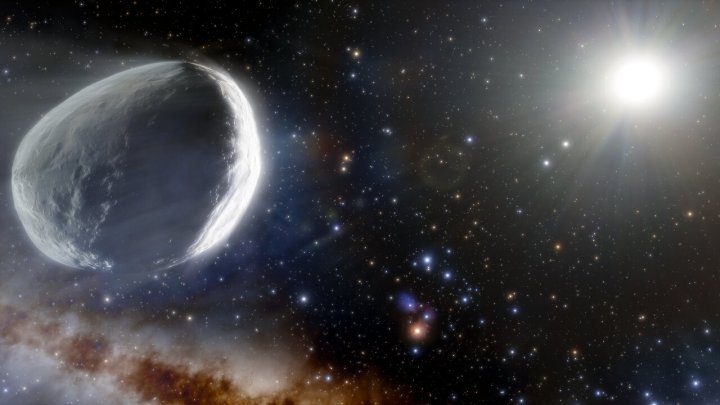
Comets are icy balls that orbit the sun and release gas as they approach the sun, giving them a distinctive tail. They are typically are 6 miles across, but scientists have recently discovered a mega comet that is 10 times that diameter.
The chonky boy has been named Comet Bernardinelli-Bernstein after its discoverers, Pedro Bernardinelli and Gary Bernstein of the University of Pennsylvania. They spotted it while looking through six years’ worth of day from the Dark Energy Survey, an international collaboration to map the expansion of the universe.
The comet is between 60 and 120 miles across and is around 1000 times more massive than a typical comet, and is thought to be a visitor from the distant Oort Cloud — a hypothesized region of comets far, far beyond the orbit of Pluto. It is calculated that the comet started off 40,000 times further away from the sun than the Earth (a measurement called an astronomical unit or AU), which is around 3.7 trillion miles.
It was possible to spot this comet even at its current distance of 20 AU away because it reflects a large amount of sunlight due to its huge size. It is approaching our sun, but don’t worry, it won’t come anywhere near Earth. This is the first time that an incoming comet has been spotted from so far away.
“We have the privilege of having discovered perhaps the largest comet ever seen — or at least larger than any well-studied one — and caught it early enough for people to watch it evolve as it approaches and warms up,” said Bernstein. “It has not visited the Solar System in more than 3 million years.”
Astronomers will get a better view of the comet as it approaches the sun. As comets approach the sun, they are warmed and their ice begins to evaporate, so this is an opportunity to watch the comet as it evolves. The comet will reach its closest point in 2031 — when it will reach within 11 AU of the sun, or just a bit further away than Saturn.



